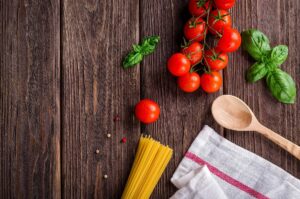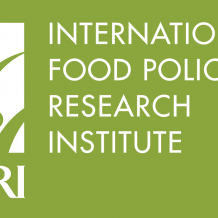Land area the size of Nicaragua is lost due to drought and desertification every year, putting 200 million small-scale farmers in Africa south of the Sahara at high risk of climate change The Western diet is unsustainable—feeding just one Westerner for one year emits as much greenhouse gas as seven round trip drives from New York to Los Angeles.
March 31, 2016, Washington, D.C.—The International Food Policy Research Institute today released its flagship publication, the 2016 Global Food Policy Report, which provides an in-depth look at major food policy developments and events in the past year, and examines key challenges and opportunities for the coming year.
Today’s global food system has major weaknesses: nearly 800 million people are left hungry, one-third of the human race is malnourished, over half of some crops never make it to the table, and the planet is ravaged from environmentally unfriendly agricultural practices. As the global population is expected to soar exponentially in the coming years, we must examine ways to feed more people efficiently and sustainably, while combatting climate change.
“The Sustainable Development Goals task us all with the challenge of eradicating hunger and undernutrition in 15 years or less,” said IFPRI Director General Shenggen Fan. “This report shows that if we are to meet these goals, we have a lot of work ahead. We must promote and support a new global food system that is efficient, inclusive, climate-smart, sustainable, nutrition- and health-driven, and business-friendly in order to ensure that no one goes to sleep hungry.”
This year’s report takes a look at the latest research on opportunities and challenges the world will face in achieving multiple SDGs. The report includes chapters on climate change and smallholder farmers, sustainable diets, food loss and waste, and water management.

Climate Change & Smallholder Farmers
Evidence is strong that climate change will continue to have negative impacts on agriculture. Every year, 12 million hectares of land is degraded due to drought and desertification—that’s roughly the size of Nicaragua, the largest country in Central America. This is especially detrimental to smallholders, such as the 200 million smallholder farmers in Africa south of the Sahara who tend drylands. Conversely, the global food system accounts for one-fifth of all greenhouse gases emitted into the atmosphere, according to the Food and Agriculture Organization of the United Nations. The development of climate-ready crops, which can lead to more efficient water use and improve yields, are key to feeding a growing population and adapting and mitigating against climate change.
Shifting Diets
Worldwide, the number of overweight people is two-and-a-half times larger than the number of undernourished people. Urbanization, increasing incomes, and higher demand for animal protein is changing diets in developing countries. Beef consumption, for example, is growing, and is one of the most resource-intensive and environmentally impactful foods to produce. Beef production requires four times more land (and four times as much greenhouse gas emissions) than dairy for every unit of protein consumed. Additionally, beef is seven times more resource-intensive than pork and poultry, and 20 times more than pulses.
In 2009, adding one American to the global population would have required an additional hectare of land, which is as big as the maximum size of a World Cup football field with more than 1,700 additional square meters to spare. It would also pump out an additional 16.6 metric tons of carbon dioxide equivalent each year—or the greenhouse gas equivalent of driving from New York to Los Angeles and back seven times.
Food Loss and Waste
Measuring food loss and waste is difficult but most studies estimate that between 27-32 percent of food produced never makes it to the table. This number is even higher for foods that are particularly susceptible to loss and waste such as fruits and vegetables. Food loss and waste occur differently in developed and developing countries. In developing countries, most food is lost at the production level—investments in infrastructure, transportation, and packing industries is key. In developed countries, most food is wasted at the retail and consumer level. Here, consumers need to be educated about food availability and appearance to reduce food waste.
Gender Inequality
Women are less prepared to overcome climate change than men. A study in Mali found that for men, access to irrigation allowed them to increase production nearly enough to offset climate shocks. This is not the case for women. According to the FAO, women with equal access to resources can increase yields by almost 30 percent and reduce the number of undernourished people by 17 percent. Removing those inequalities could reduce the number of undernourished people by up to 150 million.
Water
Today, 85 percent of global water use goes to agricultural irrigation. Innovations such as climate-ready crops can greatly reduce this amount. Rice is the staple food of more than half of the world’s population and C4 rice, for example, can double water use efficiency and increase yields by almost 50 percent. Unless significant changes are made in global water consumption, most people will live under severe water shortage conditions by 2050.
The report also features regional profiles of the unique challenges facing Africa, Middle East & North Africa, Central Asia, South Asia, East Asia, and Latin America & the Caribbean.
